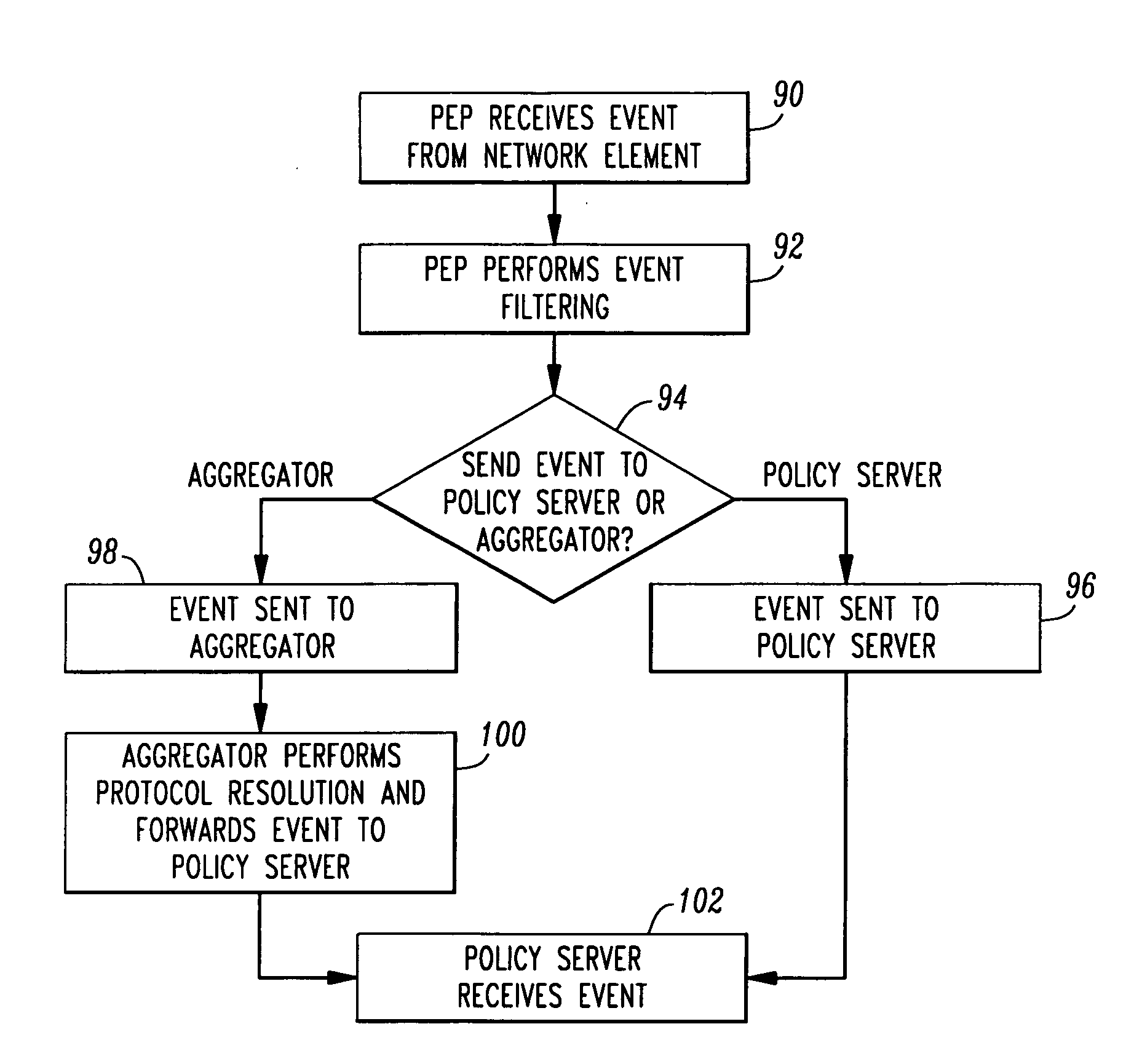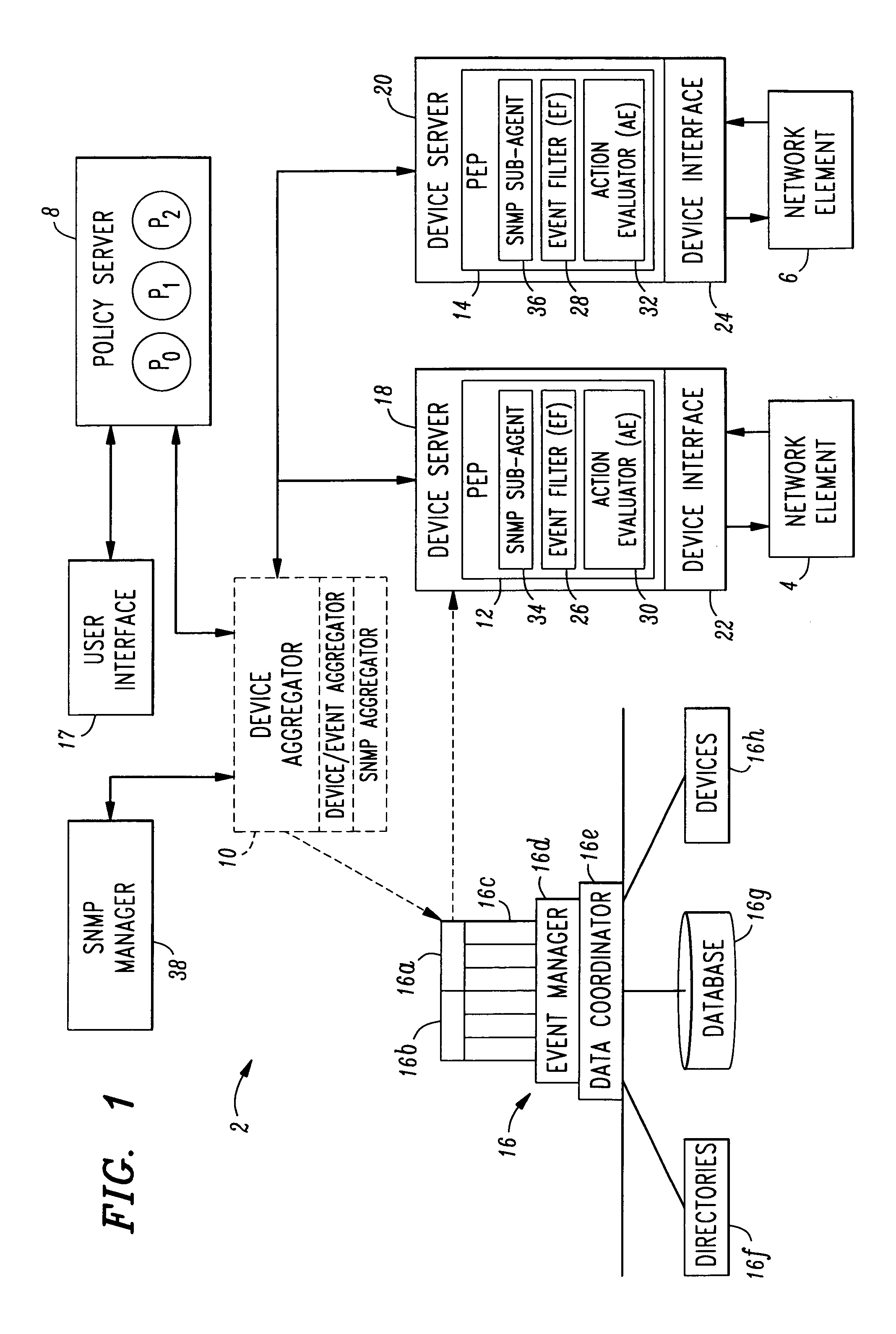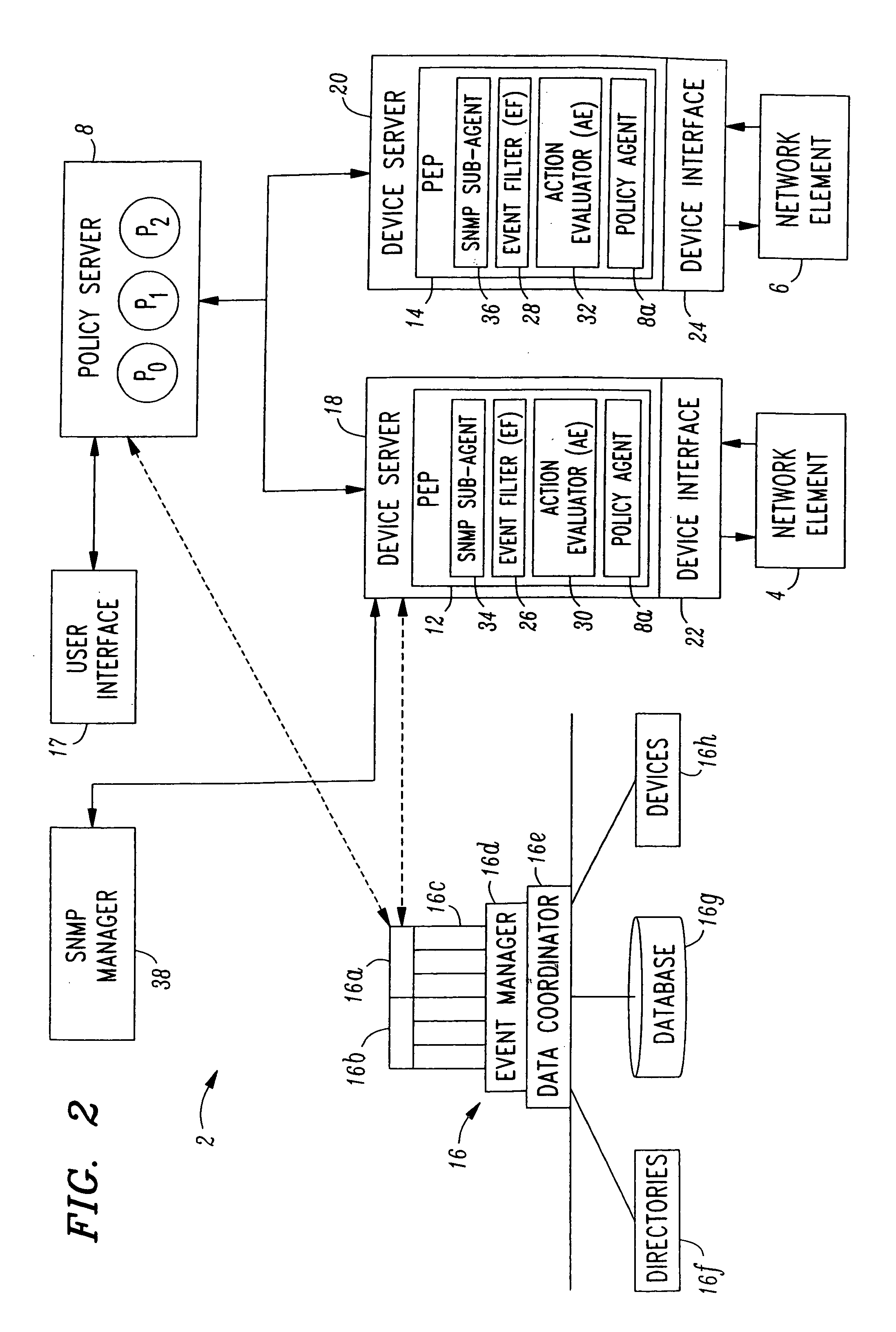Policy management system
a policy management and policy technology, applied in the field of telecommunication networks, can solve the problems of not being easily adaptable to application-specific needs, not being able to solve serious communication problems, and not being able to meet the needs of specific applications, so as to enhance the network value, facilitate the adjustment of requirements, and be highly customizable
- Summary
- Abstract
- Description
- Claims
- Application Information
AI Technical Summary
Benefits of technology
Problems solved by technology
Method used
Image
Examples
Embodiment Construction
[0028]Turning now to the Drawing, wherein like reference numbers indicate like elements in all of the several views, FIGS. 1 and 2 illustrate a policy manager 2 constructed in accordance with preferred embodiments of the present invention. The policy manager 2 is adapted to manage many different types of network elements, including but not limited to switches, routers, gateways, trunks, and the like. More generally, such network elements may be thought of as including any computer hardware device or software entity (e.g., a clock) that is connected to a network and performs a network-related function. Two network elements, shown by reference numerals 4 and 6, appear in FIGS. 1 and 2. The remaining components of the policy manager 2 are a central policy server 8, one or more optional distributed policy agents 8a (FIG. 2 only), an optional device aggregator 10 (FIG. 1 only), a set of Policy Enabling Points (PEPs), with one PEP (see reference numerals 12 and 14) being associated with e...
PUM
 Login to View More
Login to View More Abstract
Description
Claims
Application Information
 Login to View More
Login to View More - R&D
- Intellectual Property
- Life Sciences
- Materials
- Tech Scout
- Unparalleled Data Quality
- Higher Quality Content
- 60% Fewer Hallucinations
Browse by: Latest US Patents, China's latest patents, Technical Efficacy Thesaurus, Application Domain, Technology Topic, Popular Technical Reports.
© 2025 PatSnap. All rights reserved.Legal|Privacy policy|Modern Slavery Act Transparency Statement|Sitemap|About US| Contact US: help@patsnap.com



